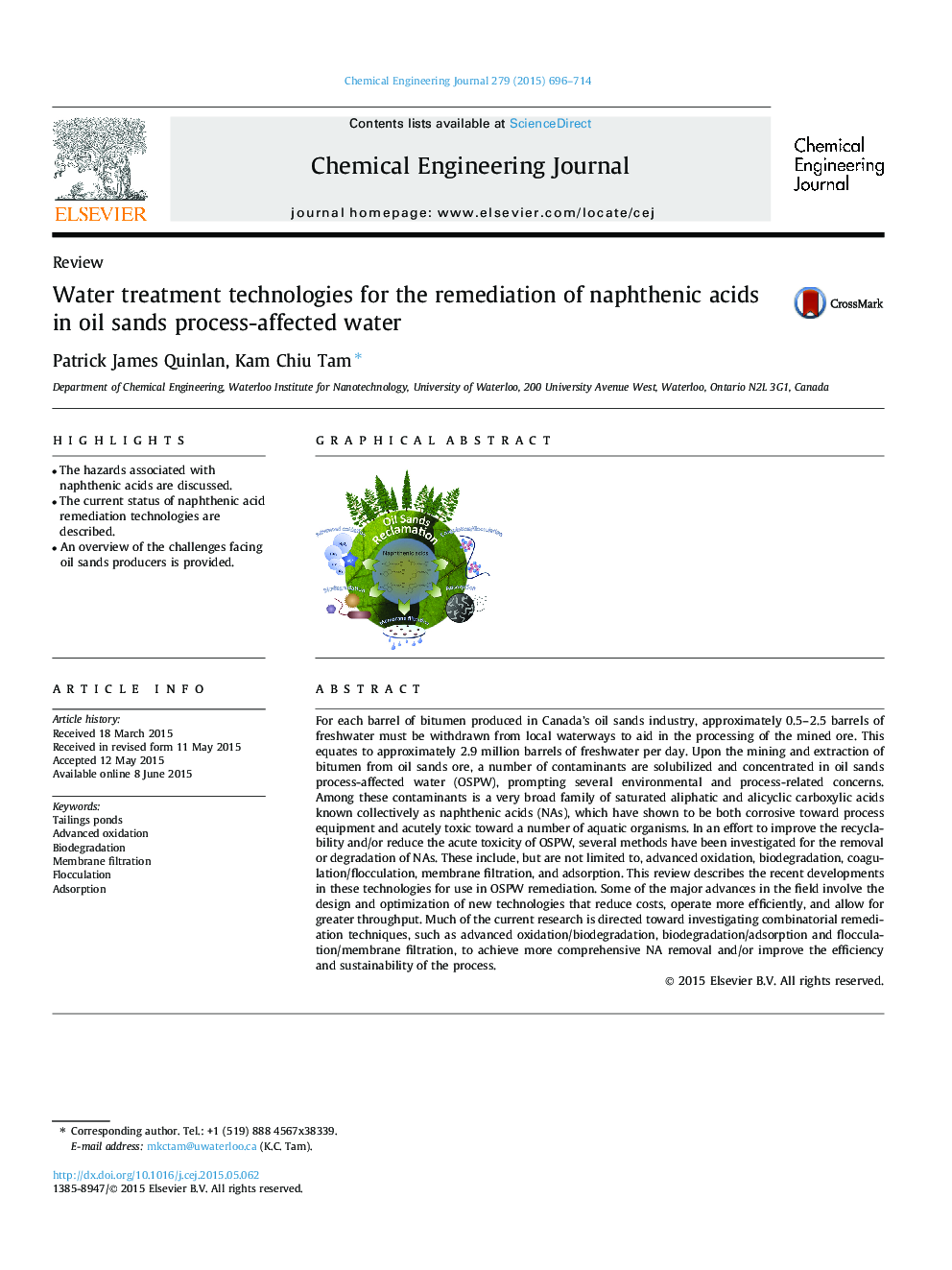| کد مقاله | کد نشریه | سال انتشار | مقاله انگلیسی | نسخه تمام متن |
|---|---|---|---|---|
| 146049 | 456362 | 2015 | 19 صفحه PDF | دانلود رایگان |
• The hazards associated with naphthenic acids are discussed.
• The current status of naphthenic acid remediation technologies are described.
• An overview of the challenges facing oil sands producers is provided.
For each barrel of bitumen produced in Canada’s oil sands industry, approximately 0.5–2.5 barrels of freshwater must be withdrawn from local waterways to aid in the processing of the mined ore. This equates to approximately 2.9 million barrels of freshwater per day. Upon the mining and extraction of bitumen from oil sands ore, a number of contaminants are solubilized and concentrated in oil sands process-affected water (OSPW), prompting several environmental and process-related concerns. Among these contaminants is a very broad family of saturated aliphatic and alicyclic carboxylic acids known collectively as naphthenic acids (NAs), which have shown to be both corrosive toward process equipment and acutely toxic toward a number of aquatic organisms. In an effort to improve the recyclability and/or reduce the acute toxicity of OSPW, several methods have been investigated for the removal or degradation of NAs. These include, but are not limited to, advanced oxidation, biodegradation, coagulation/flocculation, membrane filtration, and adsorption. This review describes the recent developments in these technologies for use in OSPW remediation. Some of the major advances in the field involve the design and optimization of new technologies that reduce costs, operate more efficiently, and allow for greater throughput. Much of the current research is directed toward investigating combinatorial remediation techniques, such as advanced oxidation/biodegradation, biodegradation/adsorption and flocculation/membrane filtration, to achieve more comprehensive NA removal and/or improve the efficiency and sustainability of the process.
Figure optionsDownload as PowerPoint slide
Journal: Chemical Engineering Journal - Volume 279, 1 November 2015, Pages 696–714
